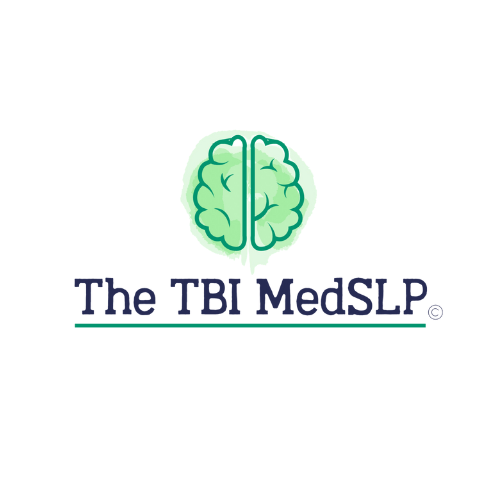Wernicke’s Area Function
Wernicke's Area: The Brain's Language Center and its Implications in Communication Disorders
Wernicke's Area is a small yet critical region that plays a huge role in our ability to communicate. This area, named after the German neurologist Carl Wernicke, is responsible for comprehending and formulating spoken and written language.
Individuals with intact Wernicke's Area, have speech that flows effortlessly. Their ideas are expressed clearly and conversations flow with ease. However, when this area becomes impaired, communication disorders can arise, disrupting the flow of language.
Communication disorders associated with Wernicke's Area dysfunction include Wernicke's aphasia. This is a condition characterized by fluent but nonsensical speech. It also presents as receptive aphasia, whereby comprehension of language becomes challenging. Understanding the association of these disorders can highlight the intricate mechanisms involved in human communication. This can enable advancements in diagnosis, treatment, and support.
Join me to explore the world of Wernicke's Area and its crucial role in communication. I will explain the mysteries of language processing and discuss the complexities of the human brain. Let's embark on a journey where science meets speech, and gain a deeper comprehension of the brain's language center.
Functions of Wernicke's Area in language comprehension
Wernicke's area is responsible for language comprehension. Wernicke's area receives input from the primary auditory cortex and integrates information from various brain regions to make sense of spoken and written language.
The main function of Wernicke's Area is to take meaning from words and sentences, to allow individuals to understand and interpret language. This region is also involved in semantic processing. This involves linking words with their corresponding meanings and forming an understanding of the message being spoken or read.
Additionally, Wernicke's Area plays a crucial role in syntactic processing, the understanding of the grammatical structure of sentences. It helps individuals recognize and interpret the order of words, phrases, and clauses in a sentence, helping to comprehend the intended meaning.
The functions of Wernicke's Area extend beyond language comprehension. Studies have shown that this region is also involved in the retrieval of word meanings and the processing of phonological information, such as the sounds of words. It contributes to the formation of mental representations of words, facilitating efficient communication.
Understanding the functions of Wernicke's Area provides valuable insights into the specific processes involved in understanding language.
Location and anatomy of Wernicke's Area in the brain
Wernicke's Area, located in the dominant hemisphere of the brain, typically the left hemisphere, in right-handed individuals. Specifically, in the posterior part of the left superior temporal gyrus, near the lateral sulcus, also known as the Sylvian fissure.
In your brain, areas that handle language, like Wernicke's Area, are connected by a pathway called the arcuate fasciculus. This pathway, made of white matter, helps Wernicke's Area talk to other language spots like Broca's Area, which is the part responsible for making speech.
In addition to its anatomical location, Wernicke's Area is also characterized by its cortical thickness and neuronal density. Research has shown that individuals with larger Wernicke's Areas tend to have superior language abilities. This further emphasizes the significance of this region in language processing.
Understanding the precise location and anatomy of Wernicke's Area provides a foundation for studying its function and the implications of dysfunction. By mapping the brain's language center, researchers can gain insights into the underlying mechanisms of communication disorders associated with Wernicke's Area.
Wernicke's aphasia: symptoms, causes, and effects on communication
Wernicke's aphasia, also known as fluent aphasia or receptive aphasia, is a communication disorder. This impairment arises when there is damage to this area of the brain. Individuals with Wernicke's aphasia often exhibit fluent speech. However, their language is characterized by a lack of meaningful content and comprehension difficulties. The most common cause of damage to Wernicke's area is ischemic stroke.
One of the hallmark symptoms of Wernicke's aphasia is the production of fluent but nonsensical speech. Individuals may speak at a normal or increased rate, using grammatically correct sentences. However, the content of their speech is often filled with paraphasias. Paraphasias are word substitutions or incorrect word choices. The resulting speech may sound fluent, but it lacks coherent meaning.
Along with their difficulties in producing meaningful speech, individuals with Wernicke's aphasia also struggle with language comprehension. They may have difficulty understanding spoken and written language. Especially complex sentences and abstract concepts. These impairments in comprehension can impact the ability to engage in meaningful conversations. It can also impact their ability to understand the information presented to them.
The causes of Wernicke's aphasia can vary, but it is most commonly associated with damage to the left hemisphere of the brain, specifically Wernicke's Area.
This damage can result from:
stroke
traumatic brain injury
tumors
degenerative diseases such as Alzheimer's or frontotemporal dementia
The effects of Wernicke's aphasia on communication can be profound. Individuals may experience frustration and social isolation due to their difficulty expressing themselves and understanding others. The fluent, nonsensical speech characteristic of Wernicke's aphasia can lead to misunderstandings and misinterpretations. This can make it challenging for others to comprehend their intended message.
Addressing the communication challenges faced by individuals with Wernicke's aphasia requires a multidisciplinary approach. This approach involves speech-language pathologists, neurologists, and other healthcare professionals. Treatment strategies aim to improve language comprehension and facilitate meaningful communication. These strategies empower individuals to rebuild their linguistic abilities and regain their quality of life.
Conclusion:
Damage to Wernicke’s area of the brain can be devastating and hinder an individual’s ability to communicate effectively. It can be isolating and difficult to overcome without a support system and a proper multidisciplinary approach. If you or someone you know has Wernicke’s aphasia it’s important to seek help from a qualified and licensed speech pathologist, give the individual time and patience, and remember it’s not the individual, it’s the impairment.


